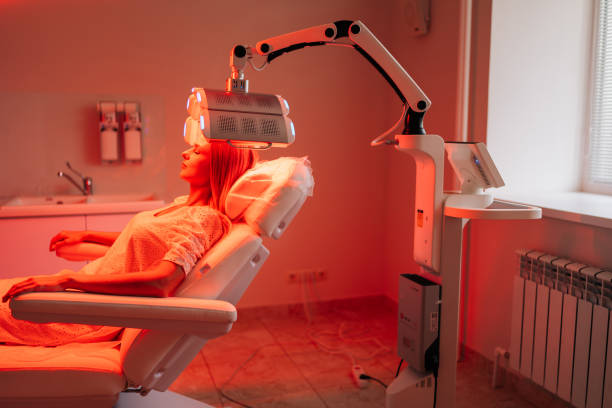Red light therapy (RLT) has attracted considerable attention for its potential health benefits, ranging from skin rejuvenation to pain relief. However, for pregnant and nursing women, it is imperative to ascertain the safety and efficacy of such treatments.
This comprehensive guide aims to address the intricacies of red light therapy during pregnancy and breastfeeding, encompassing its applications, benefits, potential risks, and safety considerations.
Understanding Red Light Therapy

This non-invasive treatment is understood to penetrate the skin, thereby stimulating cellular function and promoting healing, as well as reducing inflammation. Common applications include:
Skin Health
The improvement of the appearance of fine lines, wrinkles, and acne.
Pain Management
Alleviating chronic pain conditions and muscle soreness.
Wound Healing
Accelerating the healing process of injuries and surgical wounds.
Mechanism of Action
RLT functions by penetrating the skin layers to reach the mitochondria, which are the powerhouse of cells. The absorbed light energy enhances ATP production, leading to increased cellular energy. This boost facilitates various physiological processes, including:
Collagen Production
Enhancing skin elasticity and reducing the appearance of scars and stretch marks.
Anti-Inflammatory Effects
Reducing inflammation and promoting tissue repair.
The proposed mechanism of action of RLT involves the following:
- Penetration of the skin layers to reach the mitochondria, the powerhouse of cells.
- Absorption of light energy, which enhances ATP production, leading to increased cellular energy.
- Boosting of various physiological processes, including collagen production, enhancement of skin elasticity and reduction of the appearance of scars and stretch marks.
- Reduction of inflammation and promotion of tissue repair.
- Modulation of nerve activity to alleviate pain sensations.
Red Light Therapy While Pregnant
 Potential BenefitsPregnancy instigates a plethora of physiological changes, some of which may result in discomfort or health concerns. The application of RLT has been considered for the management of several pregnancy-related issues:
Potential BenefitsPregnancy instigates a plethora of physiological changes, some of which may result in discomfort or health concerns. The application of RLT has been considered for the management of several pregnancy-related issues:
Pain ReliefIt is a recognised phenomenon that a significant proportion of pregnant women experience back pain, joint discomfort and muscle cramps.
Skin HealthThe management of acne and enhancement of skin appearance, both of which can be influenced by hormonal changes during pregnancy, are further potential benefits.
Mood EnhancementThere is a possibility of mood enhancement and improved sleep quality by influencing melatonin production.
Safety ConsiderationsWhile the use of RLT is generally considered safe for the general population, its use during pregnancy requires careful consideration due to the potential for adverse effects on the developing foetus.
The existing body of research on the subject is limited, with most studies focusing on the effects of RLT on non-pregnant adults and on fetuses.
Overheating risksProlonged exposure to heat can be harmful during pregnancy. It is therefore essential to ensure that RLT devices do not cause significant increases in body temperature.
It is imperative to consult with a healthcare provider before initiating RLT during pregnancy to assess individual risks and benefits.
Expert Opinions
Medical professionals emphasise caution due to the paucity of comprehensive research. Dr Robin Gmyrek, a board-certified dermatologist, observes that while RLT appears to be safe, there is an absence of scientifically controlled trials in pregnant women to definitively ensure its harmlessness.
